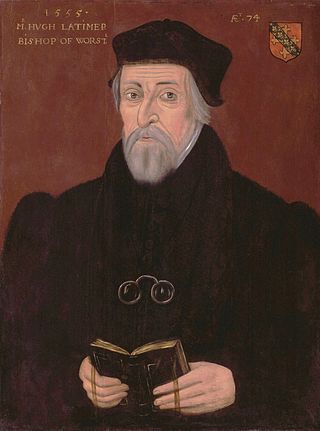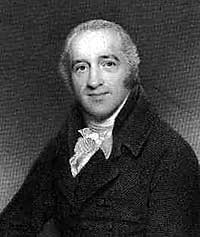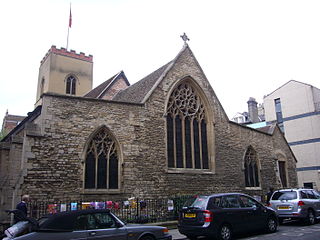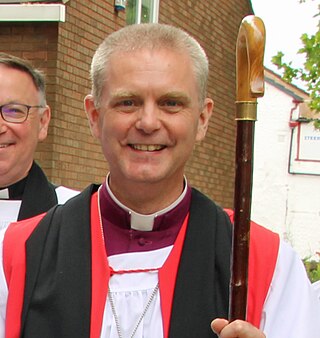
Lancelot Andrewes was an English bishop and scholar, who held high positions in the Church of England during the reigns of Elizabeth I and James I. During the latter's reign, Andrewes served successively as Bishop of Chichester, of Ely, and of Winchester and oversaw the translation of the King James Version of the Bible. In the Church of England he is commemorated on 25 September with a lesser festival.

John Fisher was an English Catholic bishop, cardinal, and theologian. Fisher was also an academic and Chancellor of the University of Cambridge. He was canonized by Pope Pius XI.

Robert Barnes was an English reformer and martyr.

Hugh Latimer was a Fellow of Clare College, Cambridge, and Bishop of Worcester during the Reformation, and later Church of England chaplain to King Edward VI. In 1555 under the Catholic Queen Mary I he was burned at the stake, becoming one of the three Oxford Martyrs of Anglicanism.

Nicholas Ridley was an English Bishop of London. Ridley was one of the Oxford Martyrs burned at the stake during the Marian Persecutions, for his teachings and his support of Lady Jane Grey. He is remembered with a commemoration in the calendar of saints in some parts of the Anglican Communion on 16 October.

Charles Simeon was an English evangelical Anglican cleric.

Frederick Donald Coggan, Baron Coggan, was the 101st Archbishop of Canterbury from 1974 to 1980. As Archbishop of Canterbury, he "revived morale within the Church of England, opened a dialogue with Rome and supported women's ordination". He had previously been successively the Bishop of Bradford and the Archbishop of York.

Thomas Bilney was an English Christian martyr.
Nicholas Shaxton was Bishop of Salisbury. For a time, he had been a Reformer, but recanted this position, returning to the Roman faith. Under Henry VIII, he attempted to persuade other Protestant leaders to also recant. Under Mary I, he took part in several heresy trials of those who became Protestant martyrs.
James Thomas O'Brien (1792–1874), was an Irish clergyman. He was Church of Ireland Bishop of Ossory, Ferns and Leighlin from 1842 to 1874.
Events from the 1520s in England.

Peas Hill is a street in central Cambridge, England. It runs between Wheeler Street to the south and Market Hill to the north. King's Parade runs parallel with the street to the west. Guildhall Street runs parallel to the east.
Thomas Gerard (1500?–1540) was an English Protestant reformer. In 1540, he was burnt to death for heresy, along with William Jerome and Robert Barnes.
Edward Staples or Staple was an English born bishop of Meath.

St Edward's Passage, known in the 18th century as Chain Lane, is a Y-shaped alleyway in Cambridge, England, between King's Parade—opposite the main gate of King's College—and Peas Hill. It houses the entrance and churchyard of the Church of St Edward King and Martyr; the Cambridge Arts Theatre; several cottages; G. David, an independent bookshop run from the same building since 1896; a few businesses; and student accommodation. It is a narrow, dark lane, with riven-stone paving, which opens out onto the much wider and sunnier King's Parade.

The following is a timeline of the history of the city of Cambridge, England.
Thomas Swinnerton was an evangelical preacher and author during the English Reformation.

Mark Simon Austin Tanner is a British Anglican bishop and academic. Since 2020, he has been the Bishop of Chester; he previously served as Bishop of Berwick, a suffragan bishop in the Diocese of Newcastle since his 2016 consecration as bishop; and from August 2011 until his consecration, he was the Warden of Cranmer Hall, Durham, a Church of England theological college.
James Stillingfleet (1741–1826) was an English evangelical cleric, vicar of Hotham in Yorkshire from 1771 until his death.















